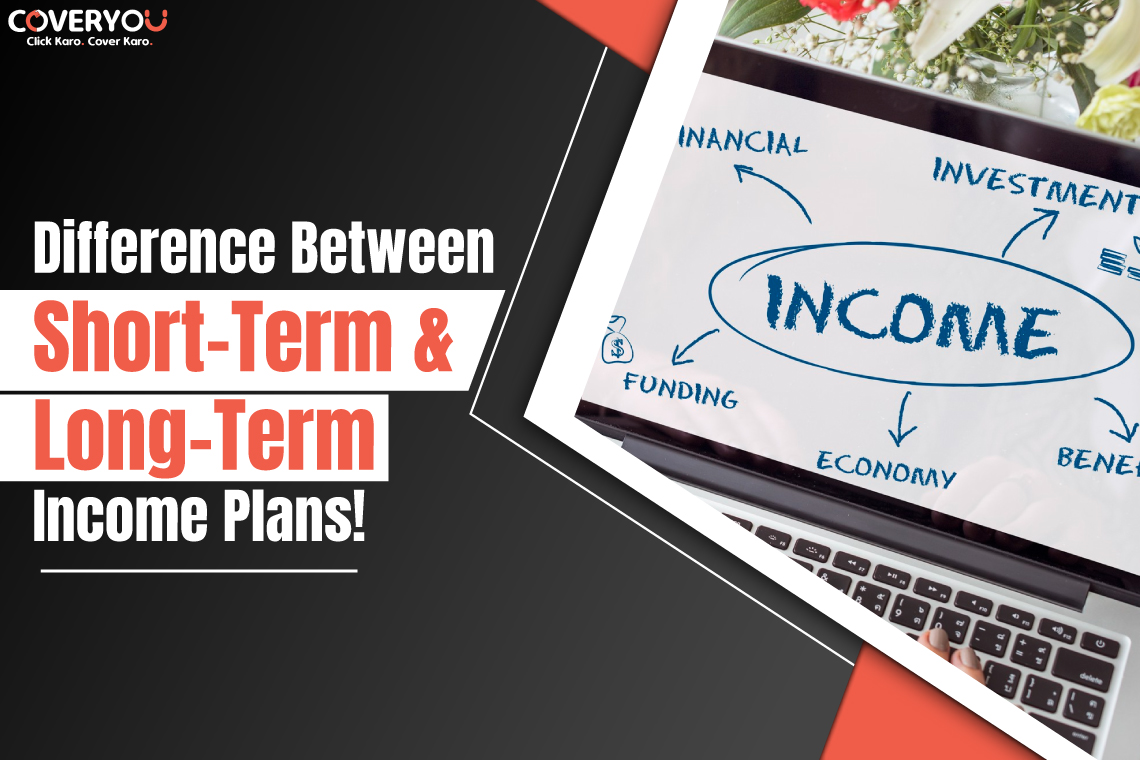..Short-term and Long-term plans are investment strategies for each person due to individual goals, risk tolerance, and time horizon. Many investments held for one to three years are normally tagged as short-term investments. While those held for more than five years or longer-term investments. Among the principal factors used in deciding excess between short- and long-term investing are the financial goals, risk appetite, and liquidity needs.
What are short-term income plans?
Short-term investments are financial instruments that one can use to meet their financial goals within a relatively short period of time. They usually come with lower risk and volatility compared to their long-term counterparts. Examples include excellent savings accounts, fixed deposits, money-market funds, and bonds with short-term maturity. These are associated with relatively lower potential returns than their long-term investment counterparts; they simply attract investors who intend to preserve capital or make fast returns.
Short-term instruments are the ones that are realized in a short period, generally less than three years. They are selected to be relatively less risky than liquid so that they can be used for immediate needs for finances or capital preservation:
Savings Accounts: They are the most popular among all deposits in banks. The savings account also offers liquidity and modest interest, thus being the right parking tool for emergency funds or short-term cash needs.
Fixed Deposits (FDs): These are time deposits that are retained with a bank or a financial institution and usually earn a higher interest rate compared to that of a savings account. They best suit conserving the capital for the short term.
Money Market Funds: These are mutual funds that make short-term investments in high-quality markets, such as Treasury bills, and commercial papers, therefore giving stability and liquidity.
Short-Term Bonds: These are usually the bonds whose maturities range from one to five years, usually providing regular interest incomes from amounts invested with a guarantee of being repaid at maturity.
Short-term Investments:
- Advantages:
- Liquidity: Easy access to funds.
- Flexibility: Can quickly adapt to market changes.
- Potential Quick Returns: Opportunities for fast profits.
- Disadvantages:
- Limited Growth: Less potential for significant wealth accumulation.
- Greater Effort Required: Needs constant monitoring and active management.
What are long-term income plans?
Long-term investments are primarily for wealth creation over a long period of time, more than five years usually. They generally give the possibility of higher returns but come along with an associated increase in risk. Due to the ups and downs of the market in the long term. Examples include stocks, equity mutual funds, and any other form taken towards real estate or retirement funds. Such as 401(k) or IRA. Such investments are more suitable for goals like retirement planning or funding some important expenses. In the distant future because they help achieve capital appreciation and the benefit of compounding returns over several years.
Long-term investments are invested for a long time, normally above five years, and generate the most yield due to capital appreciation and compounding. Some of them include:
Stocks: These mean ownership in companies with high potential returns but are under the shock of market volatility. In the long run, investors get dividends and capital gains.
Equity Mutual Funds: A fund into which money is pooled from a large number of investors to be invested in diversified equity portfolios, professionally managed for spreading risk and requiring returns.
Real Estate: Honestly, it’s investing in property for terms such as rental income and long-term appreciation—the icing on the cake is nice tax benefits and some inflation protection.
Retirement Account: Tax-advantaged vehicles, like 401(k) or IRA, are for long-term savings that allow the benefit of employer matching if using the 401(k) or tax-deferred growth characteristics of an IRA.
Long-term Investments:
- Advantages:
- Simplicity: Easy to understand and execute.
- Compound Growth: Benefits from compounding over time.
- Reduced Risk: Lower risk due to the ability to weather market fluctuations.
- Disadvantages:
- Liquidity Constraints: Difficult to access funds in emergencies.
- Limited Flexibility: Requires patience and long-term commitment.
- Uncertain Returns: Potential for negative impact from market downturns.
Difference Between Short-Term & Long-Term Income Plans
Short-Term Income Plans
These plans are for those investors who wish for regular income with the preservation of principal. Over a relatively short period, typically up to three years. Some of the major characteristics are as follows.
Investment Horizon: Short-term income plans aim at generating an income over a short period chiefly through investment in funds with relatively shorter durations, such as money market funds, short-term bonds, or fixed deposits.
Risk Profile: Since these plans are oriented basically towards capital preservation and liquidity, lower risk and stable returns could be the target. They are most suited for investors who have a conservative take on risk and also require immediate income from this class of investments.
Objectives: The prime objective is to generate regular income while shielding the invested corpus against market volatility. Investors can use these plans for short-term financial goals or as temporary parking of funds before deploying elsewhere.
Long-Term Income Plans
Long-term plans are designed to generate an income stream for a long period of time, usually five years or longer. Some of the important and notable features are as follows:
Investment Horizon: A long-term income scheme works towards generating a stream of income based on investment in securities like dividend-paying stocks, long-term bonds, real estate, or even a diversified equity fund portfolio.
Such plans would carry moderate to higher risk compared with short-term options, as they are growth-cum-income-oriented. It would best serve long-term-oriented investors who have the ability to bear some volatility in markets.
Objectives: The primary objective is to establish a flow of income that is capable of being sustained and increasing by at least the rate of inflation, with the capital having the potential to grow. A long-term plan for income generation can be considered a means of funding retirement or fulfilling some other long-term financial plan.
Considerations
Risk and Return: Short-term income plans generally show smaller returns with less risk, more consonant with immediate needs for the generation of income. Long-term income plans have higher potential returns over time but come with higher risks due to market volatility.
Investment Options: More emphasis is placed on safe assets, like cash equivalents and short-term bonds, especially in the case of any short-term plans. Long-term plans include assets that appreciate over time, like stocks or real estate.
Financial Goals: Both long-term and short-term income plans depend on factors such as a person’s finances, time horizon, and risk tolerance. The investors combine elements of both to balance their portfolio in a way that satisfies their short-term income needs while creating wealth for the future.
It distinguishes between short- and long-term investment opportunities based on an individual’s financial goals, risk tolerance, and time horizon. These are short-term investments that grant liquidity and stability at a lower return, whereas long-term investments. That grant a higher growth potential but expose them to a higher risk and longer time commitment. The diversification of the investment among these two major groups. which helps in finding a balance between risk and return consistent with set financial objectives and the prevailing markets.
CoverYou’s Curated Investment Plans for Doctors
CoverYou has designed specialized investment plans for doctors in India. Addressing their unique financial needs with both short-term and long-term options. These plans enable healthcare professionals to build a robust financial portfolio through informed decisions.
Long-term Lump Sum Plans:
- Focus on capital growth over an extended period.
- Involves investing a significant amount upfront.
- Benefits from compound growth, securing financial future.
Short-term Investment Plans:
- Designed for quicker returns.
- Provides liquidity and flexibility.
- Suitable for immediate financial goals and emergency needs.
These plans collectively help doctors achieve financial stability and growth.

















